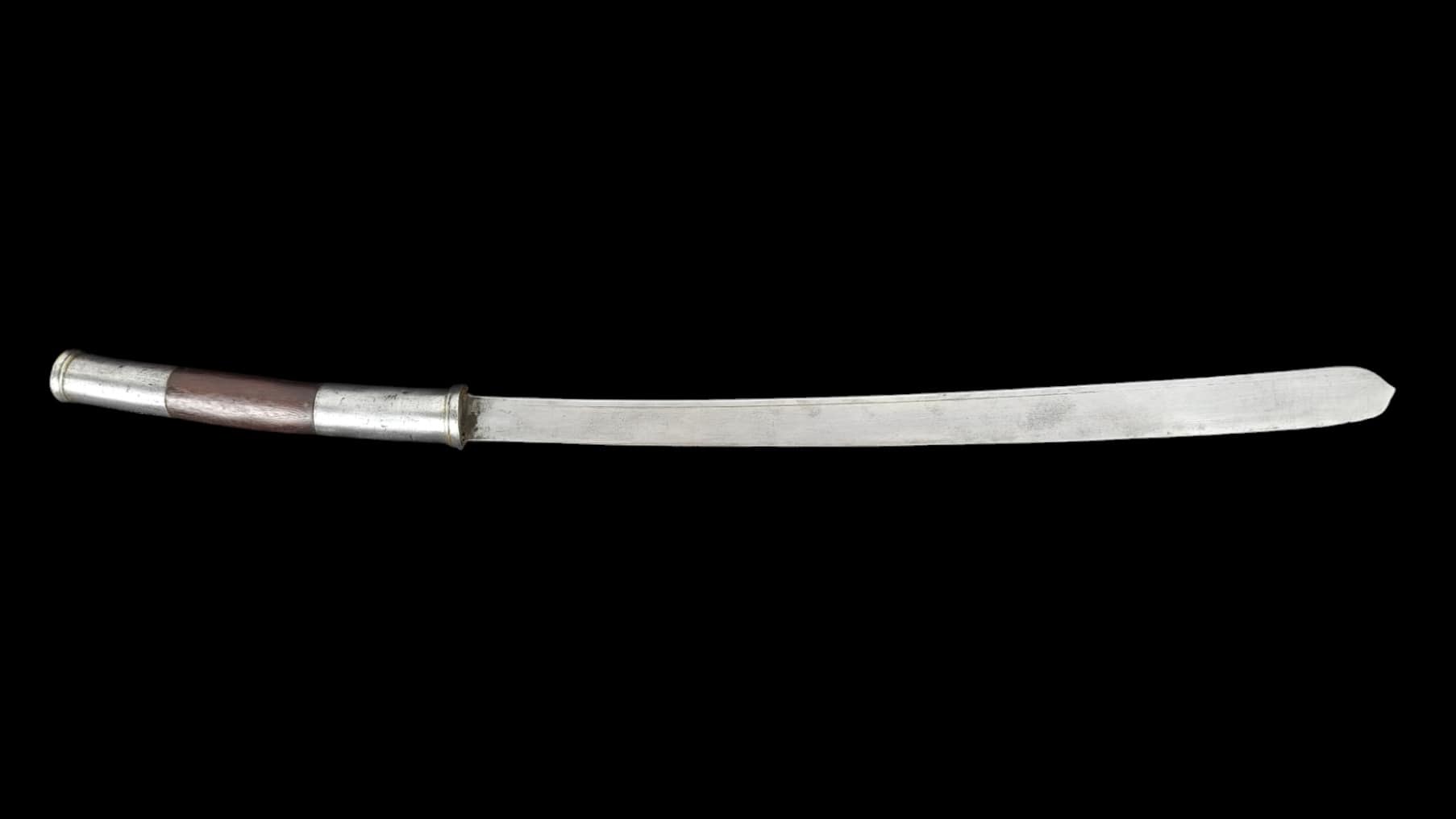
Tip of the Lotus
February 11, 2025 Asian Arms
The lotus is a motif often encountered in swords from Southeast Asia, often as a bulbous pommel, but also incorporated into other elements. The motif can be often be found as a reflection of the distinctive spreading petals in art and decorative metal work. However another type is the 'hua bua' form, referring to a particular style of blade tip with a small, sharp extension resembling the distinct tip of the closed flower. The lotus is a symbol deeply embedded in the cultures of the dha/daab using regions, namely Burma, Thailand, Laos and Cambodia. The roots of this usage lie in both Hinduism and Buddhism. A variety of attributes are associated with the flower, including purity, prosperity and in some cases with the Buddha himself as he is often depicted seated on an open lotus flower. As such, it is a motif that is found throughout art, temples, and objects throughout the region.
The 'hua bua' sword has a slightly less glamorous reason for the design, the tip is in fact both a stylistic and practical innovation, intended to provide an ability to stab with the sword, a strike not usually associated with the slashing oriented dha/daab design. It is a style that seems to have long roots in Thai swords and likely dates back to the Ayutthaya period when other similar tip styles like the 'sheep foot' were common with the ability to deliver targeted stabbing attack. Most swords of this type have shorter handles, are tip oriented and weighted more forwards than most dha/daab.
This style is often associated with the Mon people by Thai collectors, an ethnic group that is incredibly important in the history of Southeast Asia but sadly little known in the modern era due to many centuries of assimilation both in Thailand and Burma. Still, some communities remain that preserve the Mon language and culture on both sides of the border. The Mon were one of if not the earliest group to populate the region, moving south from the Tibetan plateau and also the first to accept Theravada Buddhism. They were in fact the original founders of key northern Thai cities such as Lamphun, Tak, Lampang and important central areas as well such as modern day Lopburi. The Mon where a key part of the development of Lanna, which adopted Buddhism and the Mon script. On the Burmese side of the modern day border they were perhaps even more influential, including the Hanthawaddy Kingdom which ruled lower Burma for centuries. Sadly the Mon in Burma were eventually conquered by Bamar dynasties such as the Taungoo and the Mon capital of Pegu fell in 1539 leading to an exodus of Mon nobility to Ayutthaya. Over the following centuries the Mon were both repressed and rebelled against the Bamar rulers in a sadly repetitive pattern, gradually loosing more and more of their political power and culture significance.
The Mon, like other groups in the region had significant cultural associations with the lotus flower, some of which survive to this day. The Lotus Throwing Festival (Praphaenee Rab Bua) that occurs yearly in Bang Phli district, south of modern day Bangkok, is one example. Where tradition states that the Mon inhabitants of the area collected lotus flowers to offer to the Buddha when they migrated from the area, and asked the Thai residents of the same district to continue the tradition. Several versions of the story exist, but all focus on the connection between the Mon and the lotus as a symbol. This of course does not mean that the lotus is a uniquely Mon symbol, even the Mon national symbol of the Hongsa (Hansa) bird is shared with Burmese and Thai culture.
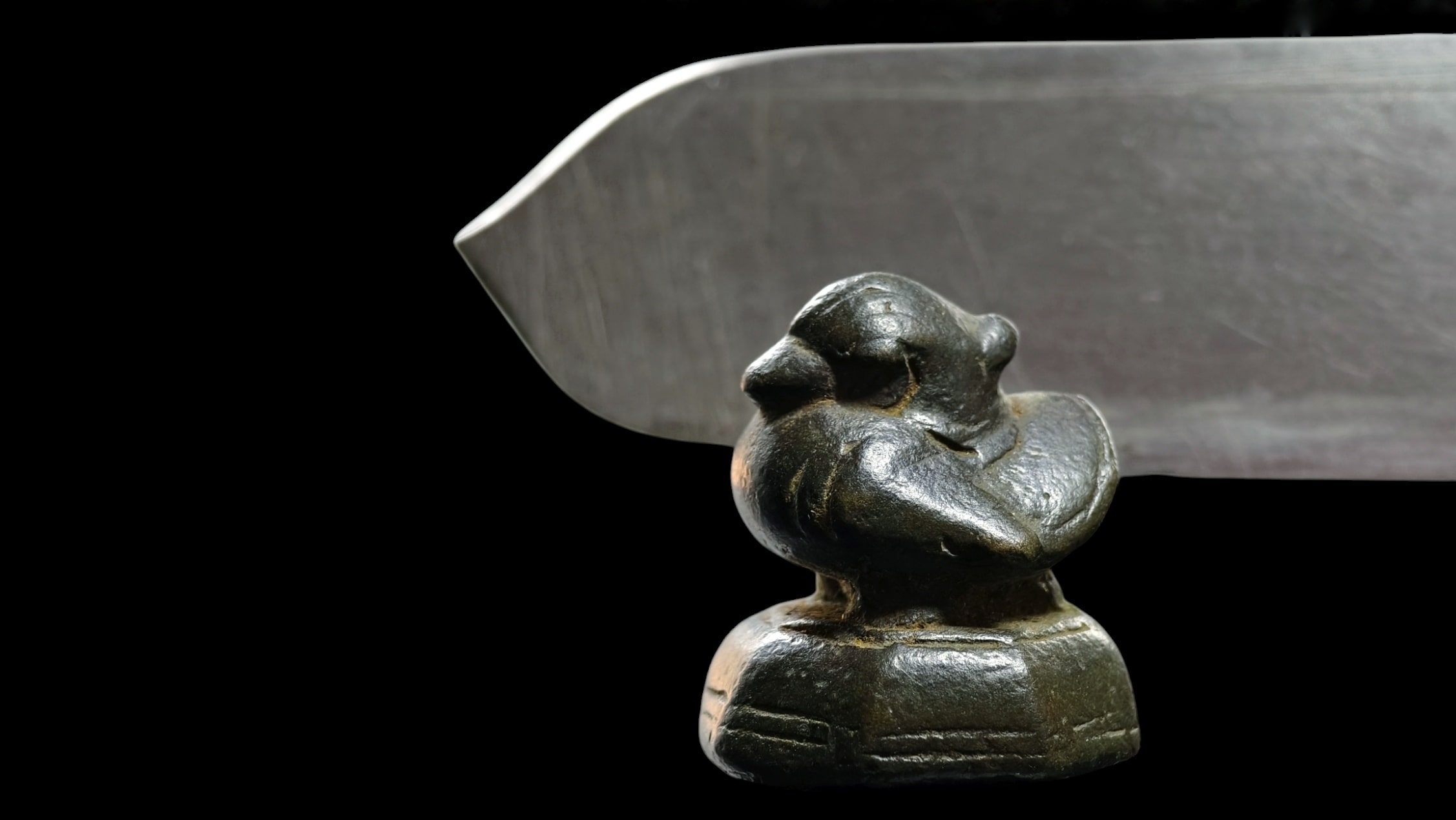
(An antique opium weight in the form of a Hongsa or hintha bird. This form is not related to the tip form of the sword depicted in the background.)
Unfortunately, there is little documented evidence of what constitutes a 'Mon' sword but given anecdotal evidence of where swords exhibiting certain features like this style of mounts and blade have been found, often corresponding to Mon populated or influenced areas, we can speculate that this sword has a strong chance to be Mon Thai, meaning a product of the large Mon community in the modern day territory of Thailand. While the community has largely assimilated in modern times, as recently as a century ago, this was not the case, and the Mon language and culture was deeply intertwined with Thai culture. Waves of fleeing Mon nobles and their retainers were accepted and welcomed into Thai political and social structures as a natural ally against a common enemy - the Bamar led Burmese empires. This included Mon enclaves in Thai cities, Mon regiments in the military structure and marriages that wedded the two peoples into deep political alliances. This population shift was particularly prevalent during the Taskin period, after the fall of Ayutthaya and before the establishment of the Rattanakosin monarchy. This sword likely dates from this period, when dramatic movements in both the native populations of modern day Thailand and Myanmar were occurring. As such it is not surprising to see swords that combine features that at an initial glance would be identified with Thai daab, but in fact owe their legacy to Mon influence, due to their deep rooted influence in both Ayutthaya and Lanna.
Tracing the Mon roots of Thai political and military society is an exercise that is beyond the scope of this brief article, but it is extensive and deeply rooted. The paper by Edward Van Roy regarding Mon Lineages in the late Ayutthaya and early Rattanakosin period is highly recommended to gain an understanding of the degree of integration between the Mon nobility and the modern Thai establishment and is one of the only English language publications on this topic. The case of Phraya Phichai (famously known as Phraya Phichai of the broken sword) is one of the more famous examples as a legendary general of Mon descent under Taksin the Great in the 18th century.
The blade of this particular sword is exceptional, not only because of the tip shape (which is beautifully formed) but for subtle details such as the v-ridge that extends the length of the blade. Assessing the skill of forging any particular blade is always highly subjective but when one has handled many swords from a particular region a general opinion is more easily formed. I can safely say this is, while a simple example, one of the best made blades I have encountered, rivalled only by the swords pictured in the group framing below.
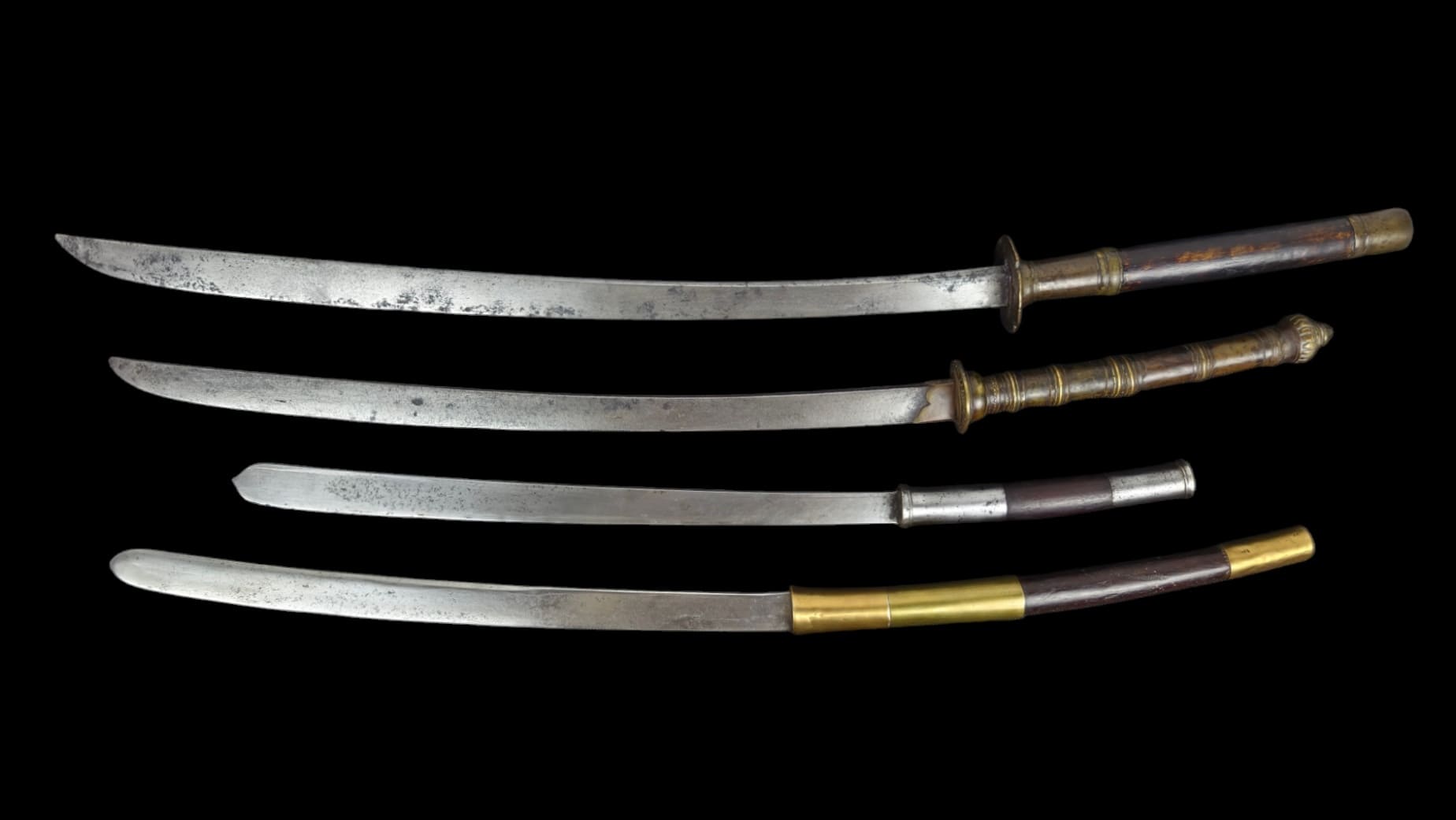
In addition to the blade, the sword has simple rosewood and iron mounts. This is very much a sword made to be used without unnecessary decorative embellishment and specialist sword forms were developed to take advantage of the unique tip form which required the weighting and grip the hilt requires. The mounts also represent a construction technique that typically observed only on older dha/daab, forge welding iron with copper braising to join the parts. This same method can be observed in medieval pieces across neighbouring regions and is a technique that requires considerable skill and training for the craftsman to achieve but is sturdy and resilient.
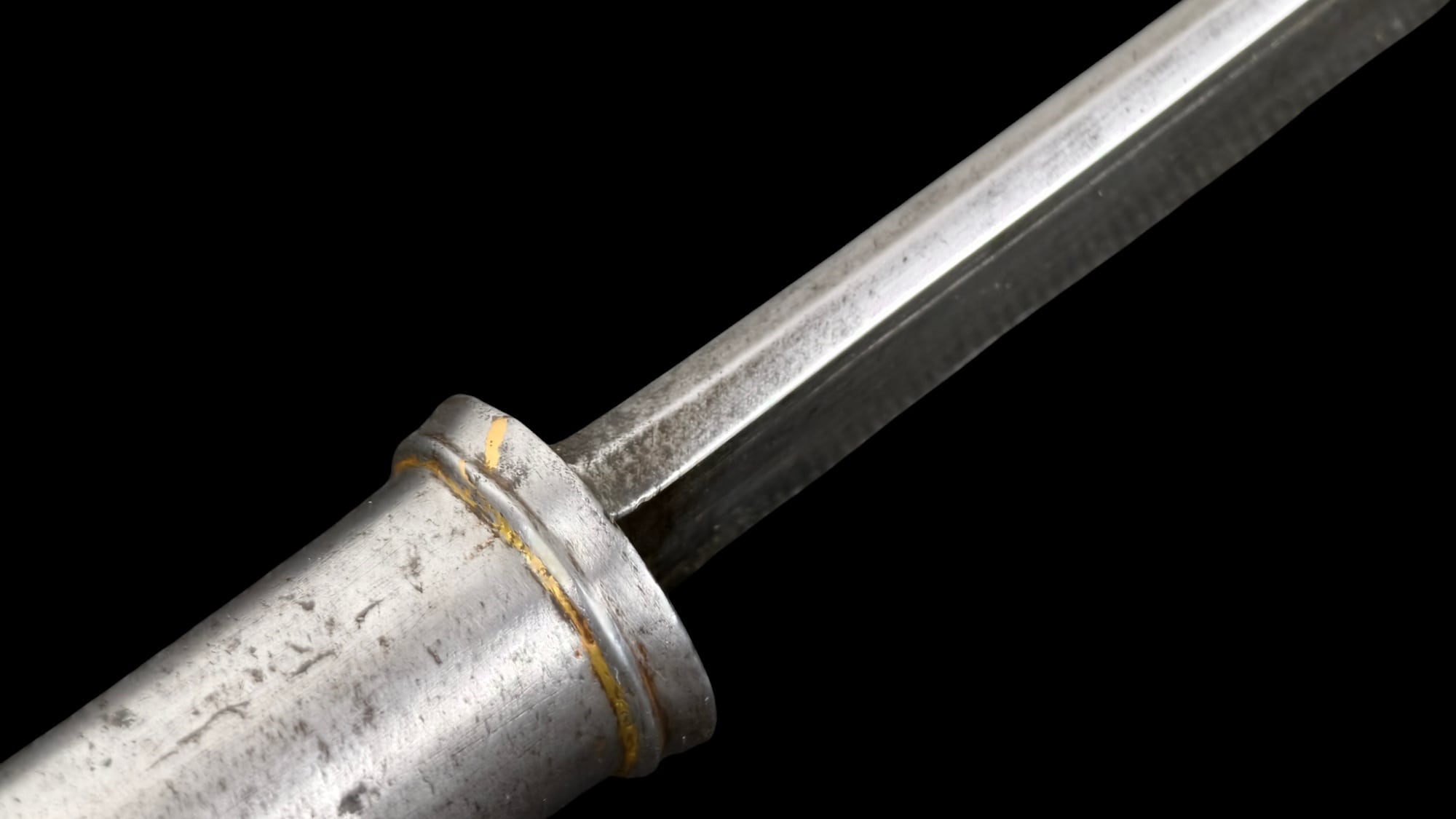
As with many forge skills, achieving simplicity but functionality is the sign of a true master and this piece exemplifies this expression of function over form. This style requires not only exception control during the rough forging of the blade but also the grinding process, in particular to achieve the V-shape spine running the entire length of the blade.
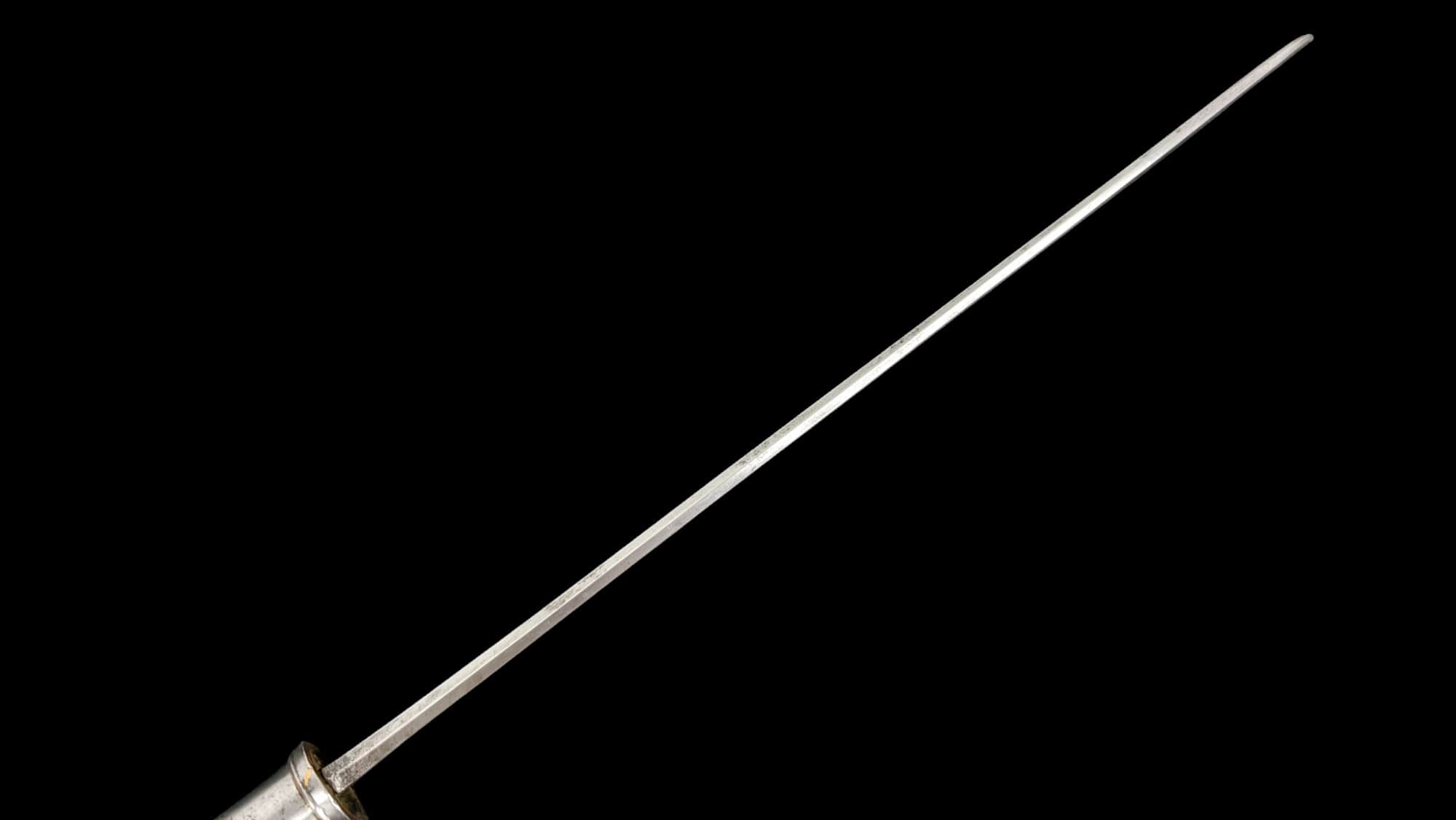
A v-spine is a feature common to many Laotian and Thai blades but this particular form is less often seen, typically the v-spine flattens toward the tip with significant distal taper, however on a blade of this length this extension of the feature provides additional rigidity, supporting the thrusting capability of this tip type.
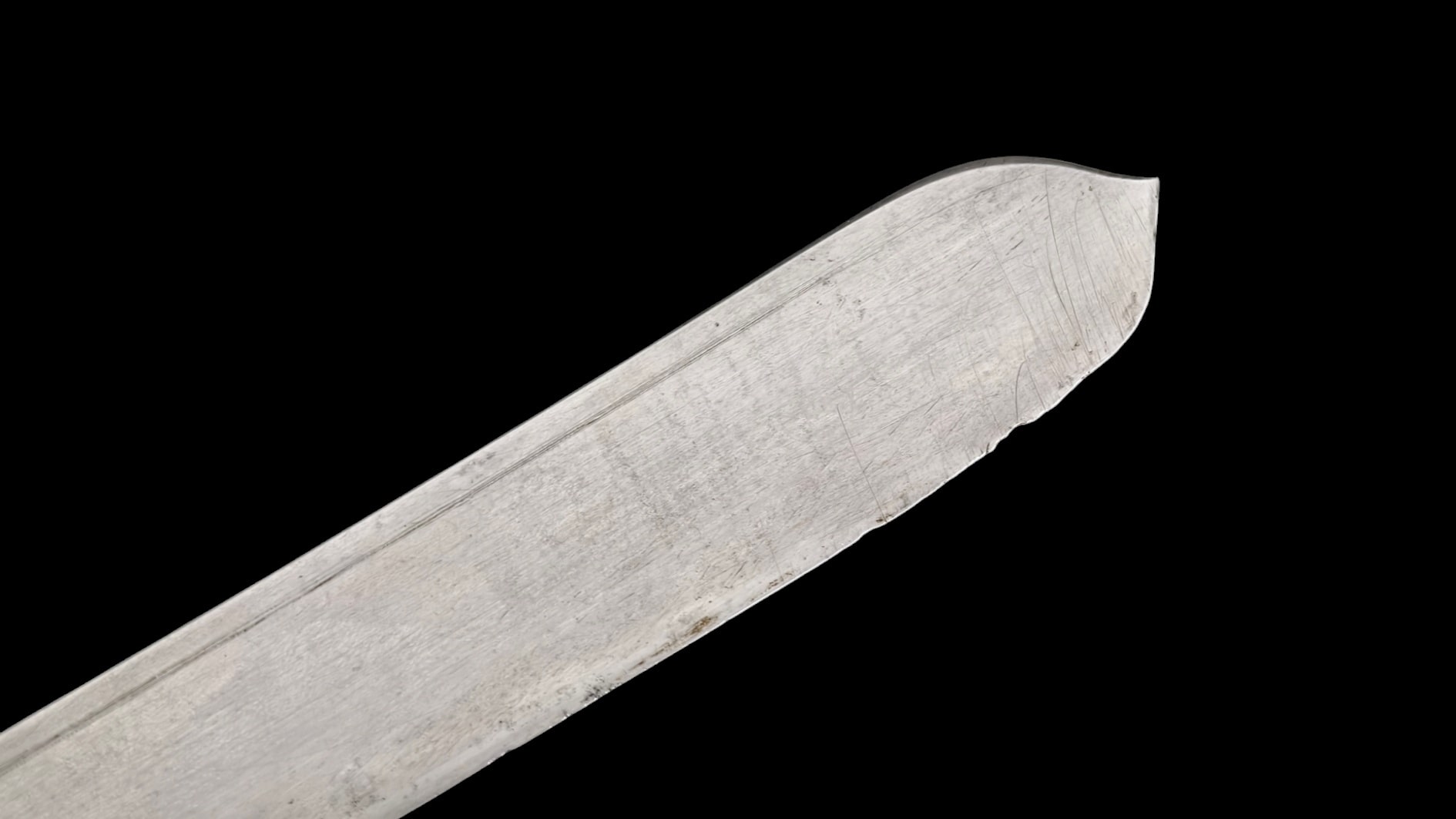
The scabbard is a simple wood example bound with rattan, however the rattan bands hold an interesting detail. The knotting style is similar to several other pieces I have handled, including one from Chin state and another that is likely from the border region with modern day Thailand. This detail is different to the rattan band style found on most Thai or Lao pieces and perhaps places this piece near the border regions as well or hints at an origin tied to the flight of the Mon from Burmese persecution.
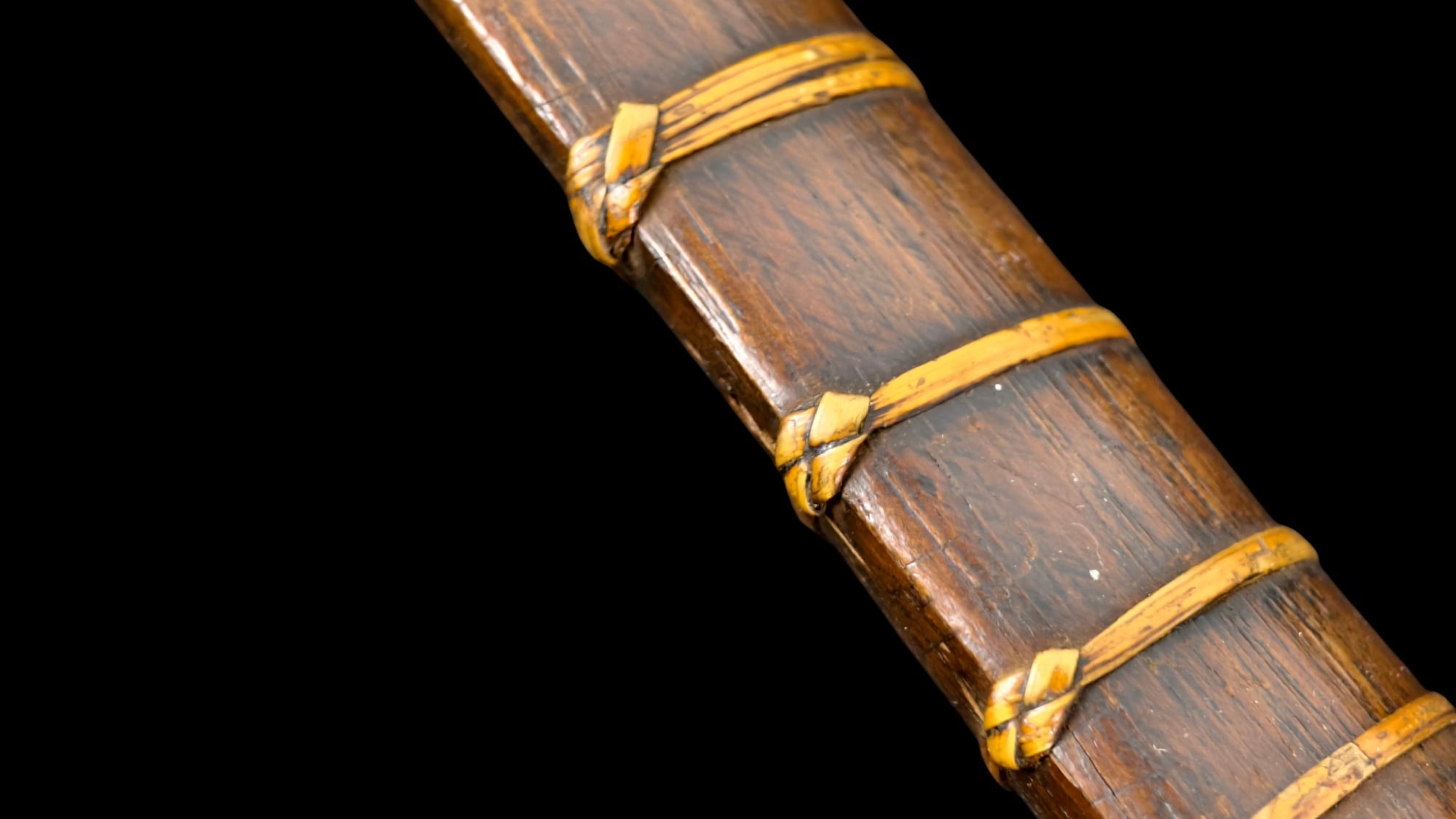
The Mon on the Thai side of the border are in modern times grouped near Bangkok due to their historic position within Ayutthaya and subsequent migration to the new capital, as well as in the north near their historic centres like Lamphun. Other populations exist closer to the modern border like the somewhat famous Mon bridge in Sangkhla Buri, but are the result of later population movements.
The lotus is a symbol that may seem at odds with a weapon of war, an instrument that brings death, however within the culture where this sword originates from it is part of an understanding of life as a cycle within which death is a natural part. A sword can, paradoxically, be made as an item that may have a grim function but house it's own beauty. In the case of this piece, as a sword perhaps used by a bodyguard or elite warrior, it may have in fact had a defensive function for much of its life.
As a collector it is simple pieces that most often speak volumes. This sword is one of those examples. It is not a piece that would attract attention for it's decoration, precious metals or ornaments. But it is a piece that experienced collectors and practitioners of martial arts are immediately drawn to because of its practical characteristics. In a world increasingly drawn to perceived monetary value, simple, unpretentious swords often are overlooked by collectors who focus on decoration and rare materials. While I will never be able to be sure if this sword was in fact made or owned by a Mon, their fading cultural influence is an apt metaphor for the increasing rarity of antiques like this piece and I am proud to be able to preserve a small part of that heritage.